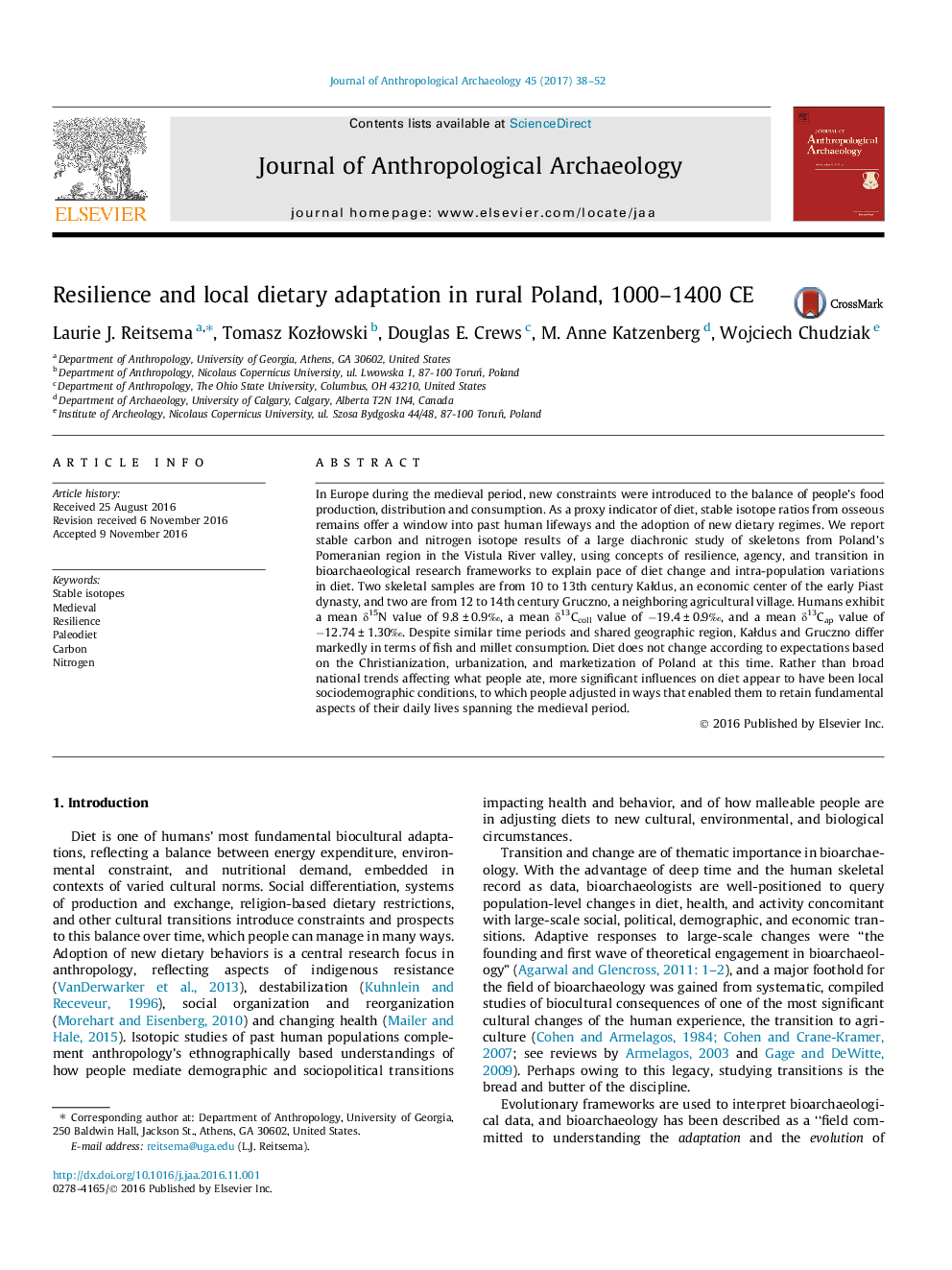| Article ID | Journal | Published Year | Pages | File Type |
|---|---|---|---|---|
| 5111920 | Journal of Anthropological Archaeology | 2017 | 15 Pages |
Abstract
In Europe during the medieval period, new constraints were introduced to the balance of people's food production, distribution and consumption. As a proxy indicator of diet, stable isotope ratios from osseous remains offer a window into past human lifeways and the adoption of new dietary regimes. We report stable carbon and nitrogen isotope results of a large diachronic study of skeletons from Poland's Pomeranian region in the Vistula River valley, using concepts of resilience, agency, and transition in bioarchaeological research frameworks to explain pace of diet change and intra-population variations in diet. Two skeletal samples are from 10 to 13th century KaÅdus, an economic center of the early Piast dynasty, and two are from 12 to 14th century Gruczno, a neighboring agricultural village. Humans exhibit a mean δ15N value of 9.8 ± 0.9â°, a mean δ13Ccoll value of â19.4 ± 0.9â°, and a mean δ13Cap value of â12.74 ± 1.30â°. Despite similar time periods and shared geographic region, KaÅdus and Gruczno differ markedly in terms of fish and millet consumption. Diet does not change according to expectations based on the Christianization, urbanization, and marketization of Poland at this time. Rather than broad national trends affecting what people ate, more significant influences on diet appear to have been local sociodemographic conditions, to which people adjusted in ways that enabled them to retain fundamental aspects of their daily lives spanning the medieval period.
Related Topics
Social Sciences and Humanities
Arts and Humanities
History
Authors
Laurie J. Reitsema, Tomasz KozÅowski, Douglas E. Crews, M. Anne Katzenberg, Wojciech Chudziak,
